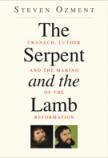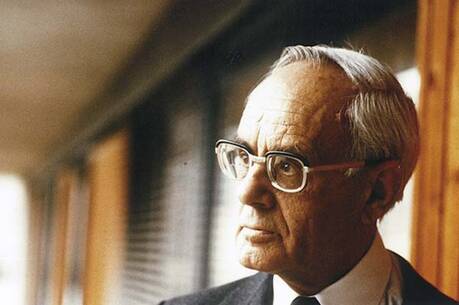Sex, Art and Altarpieces
It is common knowledge that Martin Luther (1483-1546) changed the religious landscape of Western Europe. Fewer of us are familiar with Lucas Cranach the Elder (1472-1553), the most prolific and arguably the most accomplished artist of the time. And only specialists know that the two were close friends who struggled together on a united front for many of the same goals. Steven Ozment, a distinguished Harvard historian, scrutinizes this relationship between theologian and artist and argues that working in tandem, they shook “the foundations of established religion and established art.”
They concurred entirely, for instance, on the issue of iconoclasm, beating back the opponents of religious images and art in 1521-22. Even more intriguing is Ozment’s contention that the two cooperated entirely in dethroning “the great idol and fiction of the age,” namely “Renaissance Man.” In fact, already in 1511, while Luther was still a humble and obedient Augustinian friar, Cranach was busy deconstructing this illusion in his art: dignity, manliness, moral clarity, effortless superiority, purposeful action and so forth, all were overshadowed now by loss of meaning, moral ambiguity, Angst and doubt. Over the next years, Luther’s thinking evolved in the same direction, a process which reached its apogee in his 1525 attack on the Renaissance and scholastic notions of a human free will that is autonomous and sovereign. Here art and theology spoke their own languages but said the same thing.
A final example of this is Chapter 8, entitled “Women on Top.” Yes, it is about sex. Ozment’s main contention can be summarized as follows. One can read today in popular historiography that by the end of the Middle Ages, Western Christianity had developed into a “sex-hating religion.” Experts describe this in more nuanced terms: in the late Middle Ages, the dominant attitude toward human sexuality among the church’s celibate male leaders was a “horrified fascination” with the subject. Collectively, they struggled mightily to control the sex lives of the laity on an unprecedented scale. The sex drive, they taught, should and could be dealt with only in one way—massive and unrelenting repression. Precisely here, Ozment thinks, the Luther-Cranach alliance had its most decisive influence:
Cranach’s art and Luther’s sermons warn time after time against misguided repression of the sex drive.... [I]t requires and responds best to the internal pressures and pleasures that only the intimacy and privacy of the estate of marriage can properly deliver.
God’s will for humanity points in the direction of marriage, sexual fulfillment and family; not in the direction of celibacy and sexual repression—what church leaders had long called “the state of perfection.”
Luther wrote more to exalt the human sex drive than any other late medieval or early modern theologian. The same impulse, Ozment argues, captivated Cranach. It is well known that he painted a great many nudes, inventing in the process what art historians call “the Cranach woman.” What first strikes the viewer, we are told, is “the absence of volume”: the “ponderous woman” of the high Renaissance gives way to a “lithe, willowy female ...with reduced breasts and deemphasized derriere.” Luther was hardly oblivious to all this, and in fact, he registered no objection. On the contrary, he commissioned his friend to illustrate his complete German translation of the Bible; appearing in 1534, it was printed with 123 Cranach drawings. These were not nudes, of course, but artistic renderings of the biblical narrative by a painter famous for his nudes. Who knows what this did for the marketing of Luther’s German Bible among the laity? Maybe there was a grain of truth in the remark by the 19th-century German Romantic poet Heinrich Heine: “The loins of Cranach’s Venus are far more substantial theses than those the German monk placed on the door of the church in Wittenberg.”
By now it should be clear that Ozment’s book is no stodgy, dreary tome on art history or the history of theology. Rather it is an example of scholarship at its best: carefully researched, elegantly written, spirited and provocative. Another of its outstanding features is the selection of 77 black and white plates and 11 color plates, accompanied by Ozment’s invariably insightful and thought-provoking commentary. Cranach’s “Wittenberg Altarpiece” paired with Ozment’s explication, for example, is a gem and an eye-opener. Of course, even in the midst of such excellence, reviewers can find faults. But measured against this book’s towering virtues, quibbling seems somewhat lame. Relatively few of the books I see are worth a “slow read.” This is one of them.
This article also appeared in print, under the headline “Sex, Art and Altarpieces,” in the October 29, 2012, issue.








